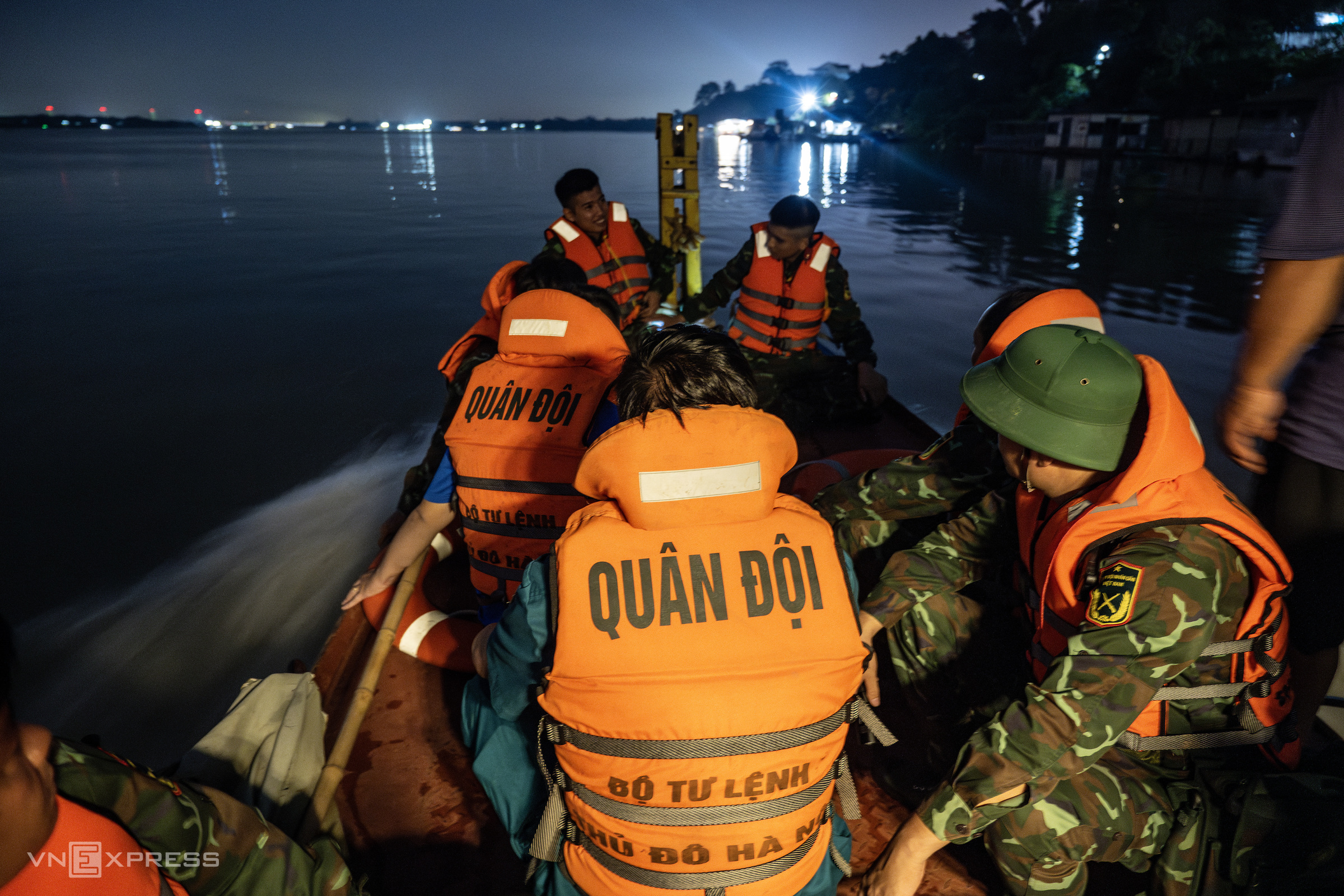 |
At 7 pm, nearly 20 officers and soldiers from the 544th Engineer Battalion of the Hanoi Capital Command, along with the Command Board of Area 4 - Gia Lam and the militia of Bo De ward, departed to recover two bombs from the Red river. |
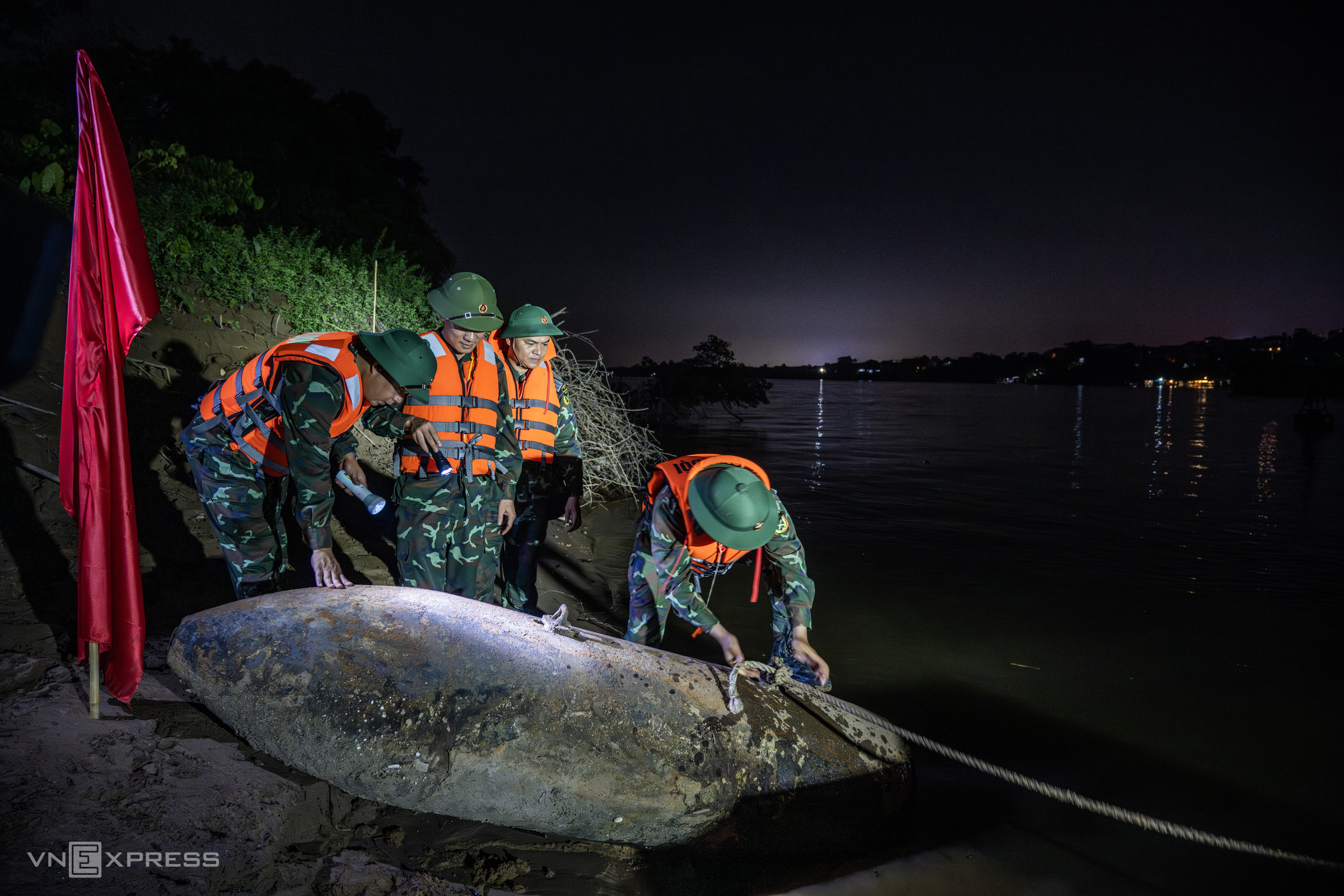 |
A small incense-burning ceremony took place before the operation. A safety perimeter was established with buoys and warning signs, restricting boat traffic. The Hanoi Capital Command reported to the General Staff, requesting permission to transport the bombs to the TB1 firing range in Bac Ninh province, nearly 200 km from Hanoi, for disposal. |
Flags marked the location of the bombs, which were discovered on the afternoon of 15/9, 300 meters upstream from pillar P10 of the Long Bien bridge, within Bo De ward. The Hanoi Capital Command, upon receiving the report, directed its Engineering Department to investigate. The bombs were identified as M-118 demolition bombs, each weighing 1,362 kg (3000 lbs), with both nose and tail fuses intact.
"These are the largest unexploded bombs found near Long Bien bridge, dropped by the US during the war," said Colonel Nguyen Chien Thang, Head of the Engineering Department of the Hanoi Capital Command.
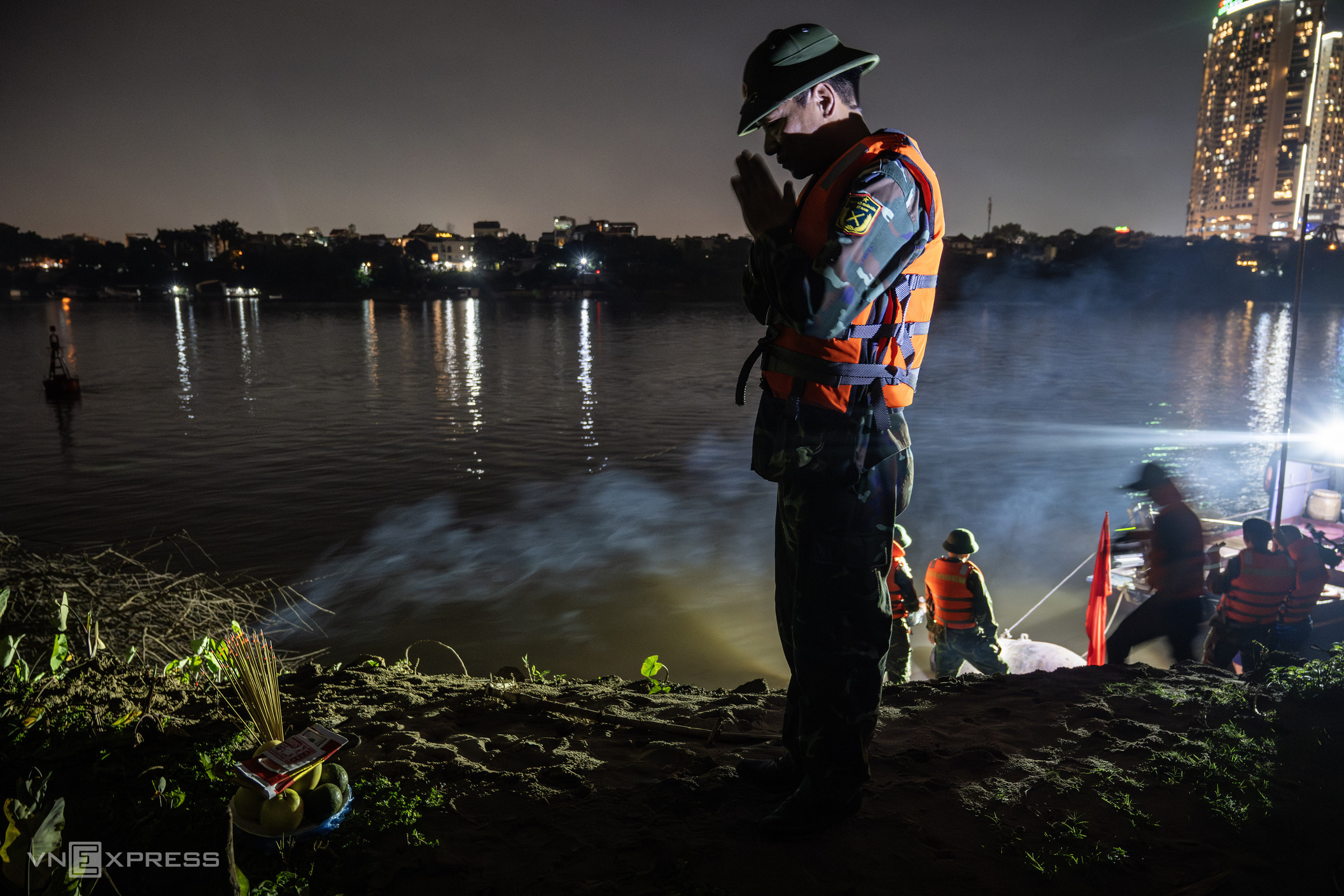 |
At 8:20 pm, the second bomb, located about 20 meters from the first, was recovered. |
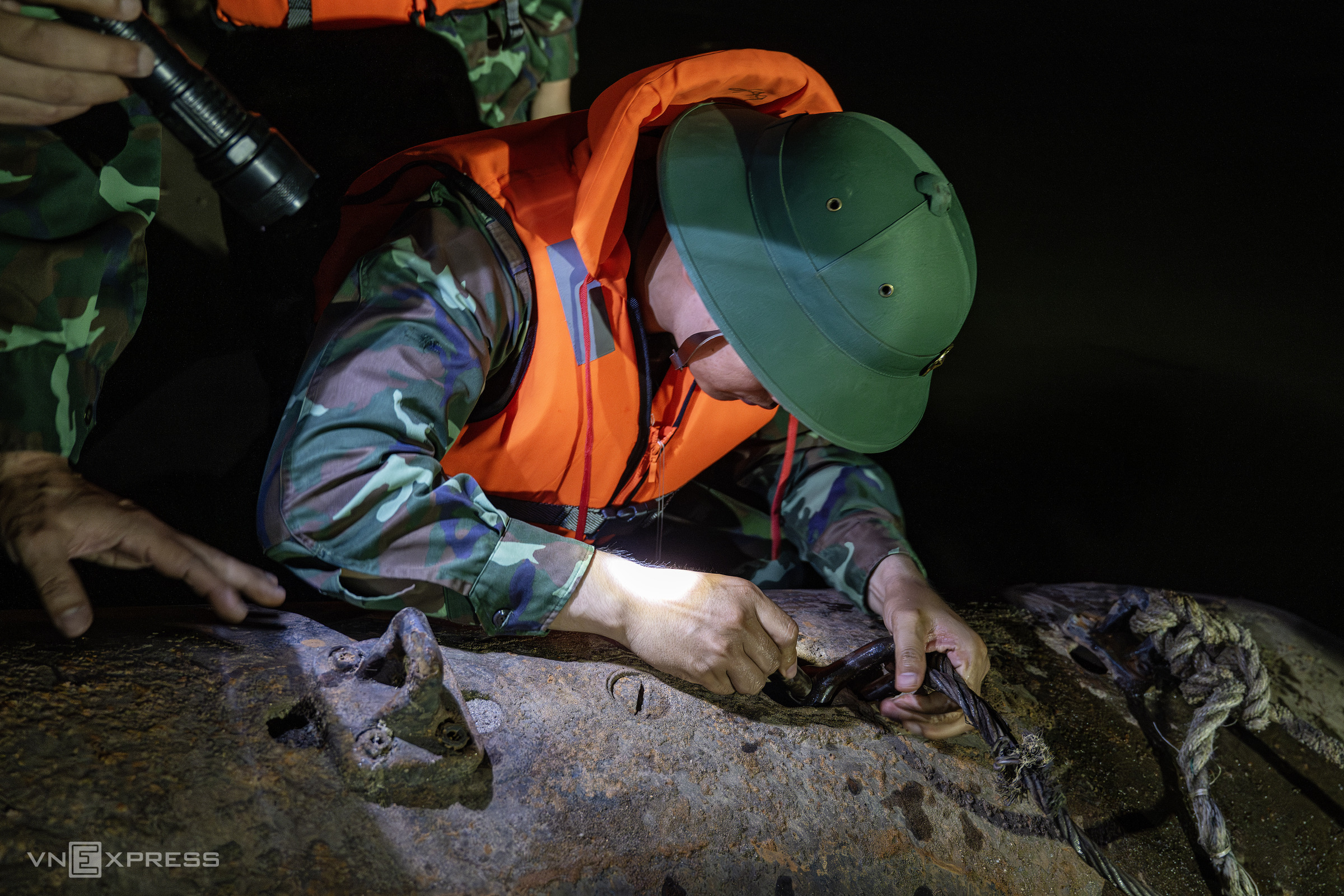 |
On-site commander, Major Le Van Hung, head of the 544th Engineer Battalion, stated that due to the live fuses, strict procedures were followed. |
The bombs' outer casings were rusted but their suspension lugs remained intact. Over the past 15 years, the Hanoi Capital Command has collected and disposed of over 1,700 bombs, including 103 demolition bombs ranging from 250 to 3,000 lbs, over 940 cluster bombs, and 660 artillery shells and other explosives.
Colonel Thang explained that these unexploded ordnance (UXO) had their detonation mechanisms activated. However, various factors, such as malfunctioning fuses, insufficient rotation, or impact force, prevented them from exploding. They remain extremely dangerous and could detonate at any time. He urged the public to stay away from any suspected UXO and immediately report them to the authorities for safe handling.
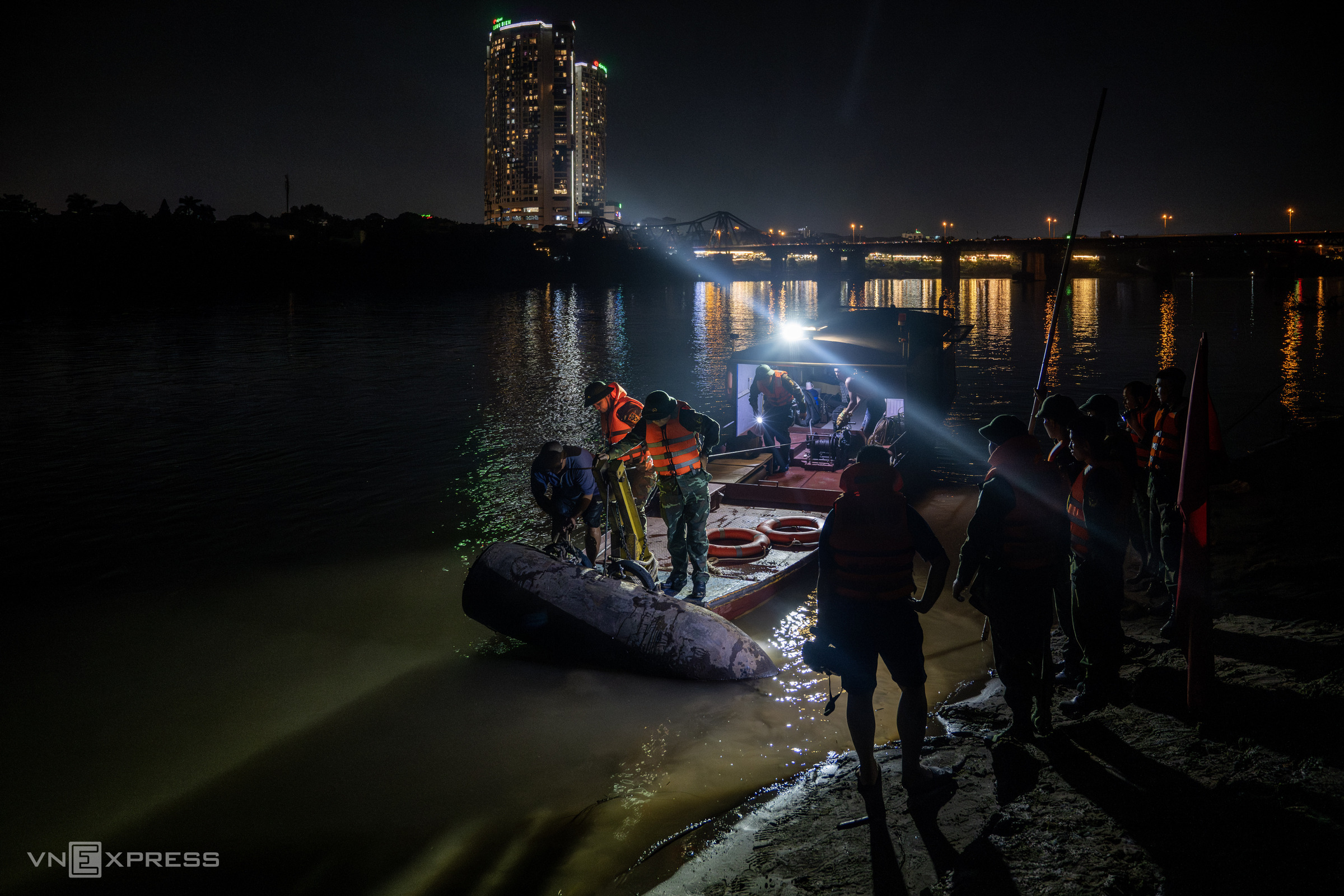 |
Nguyen Ba Dat, platoon leader of the 4th Platoon, 2nd Company, 544th Battalion, wearing a blast suit and helmet, prepared to accompany the transport to TB1. Dat's role was to lay detonation wires and set up the detonation station. In his two years with the unit, Dat has participated in four large-scale bomb disposals. |
After 20 minutes, the team secured the first bomb to a barge with cables and towed it 2 km to Hoa Lang sand port for removal.
As the city bustled at night, the engineers meticulously carried out their recovery mission.
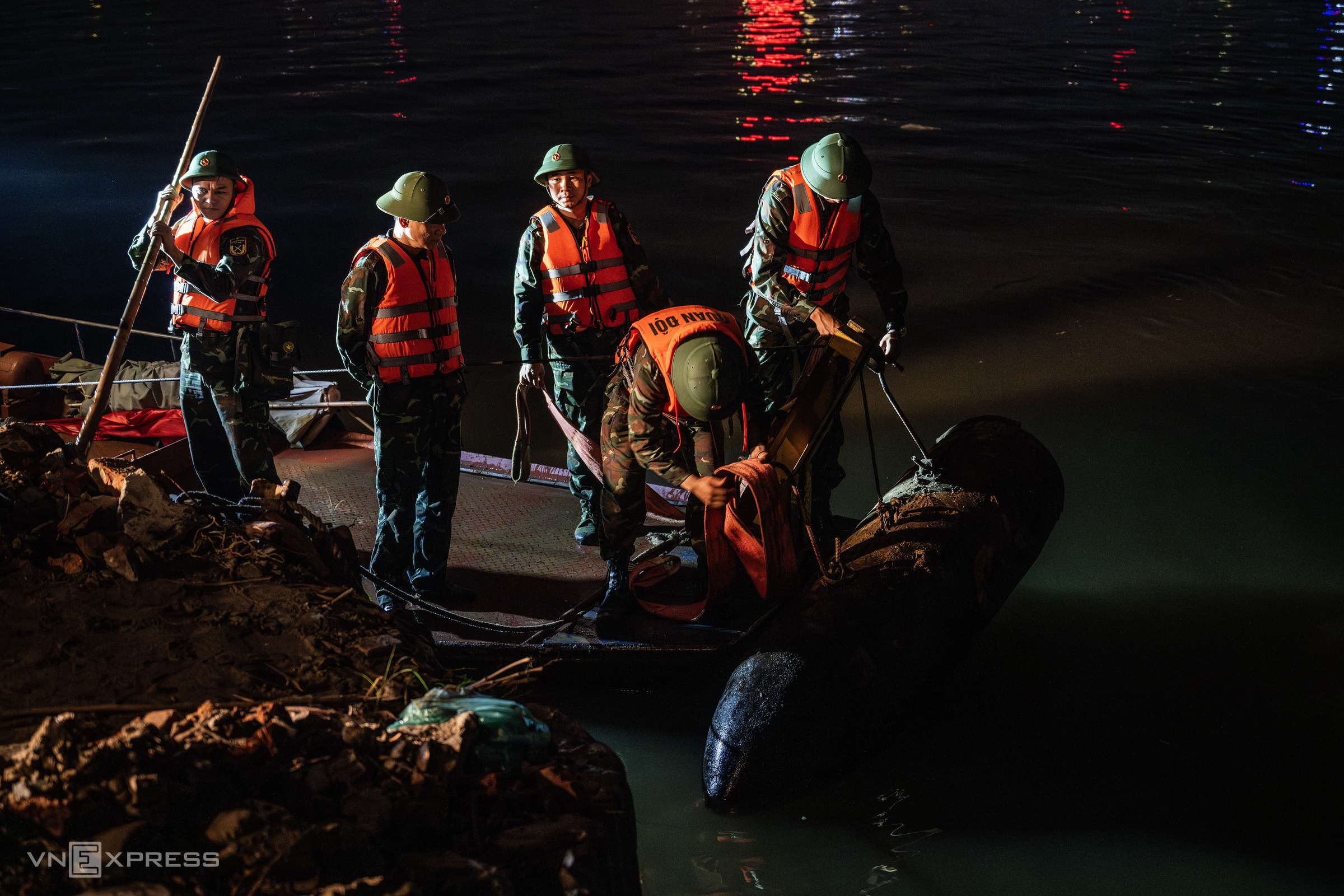 |
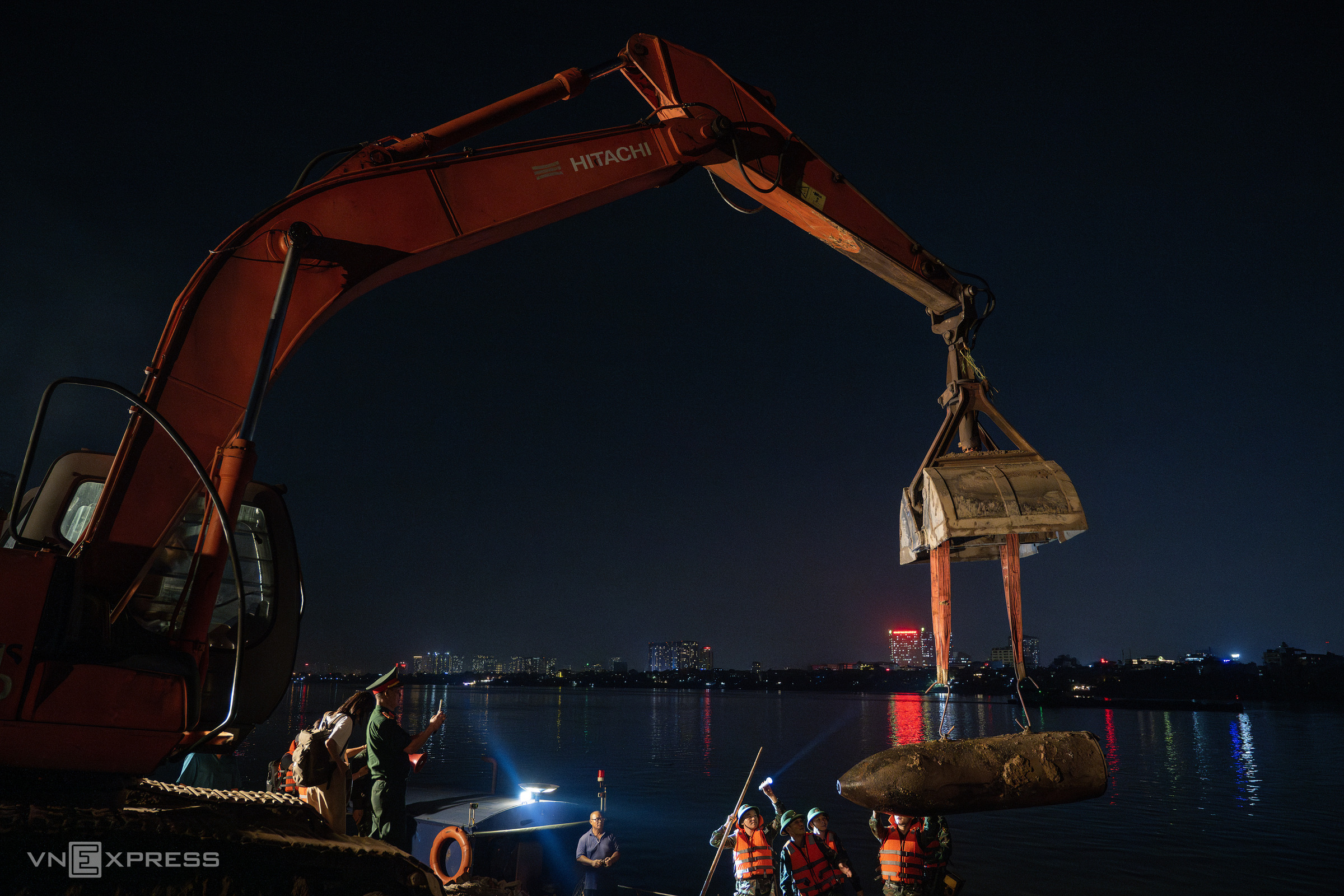 |
During the tow, the engineers continually checked the securing cables. The personnel involved were highly skilled and experienced.
Each bomb was loaded onto a specialized vehicle for transport to the disposal site.
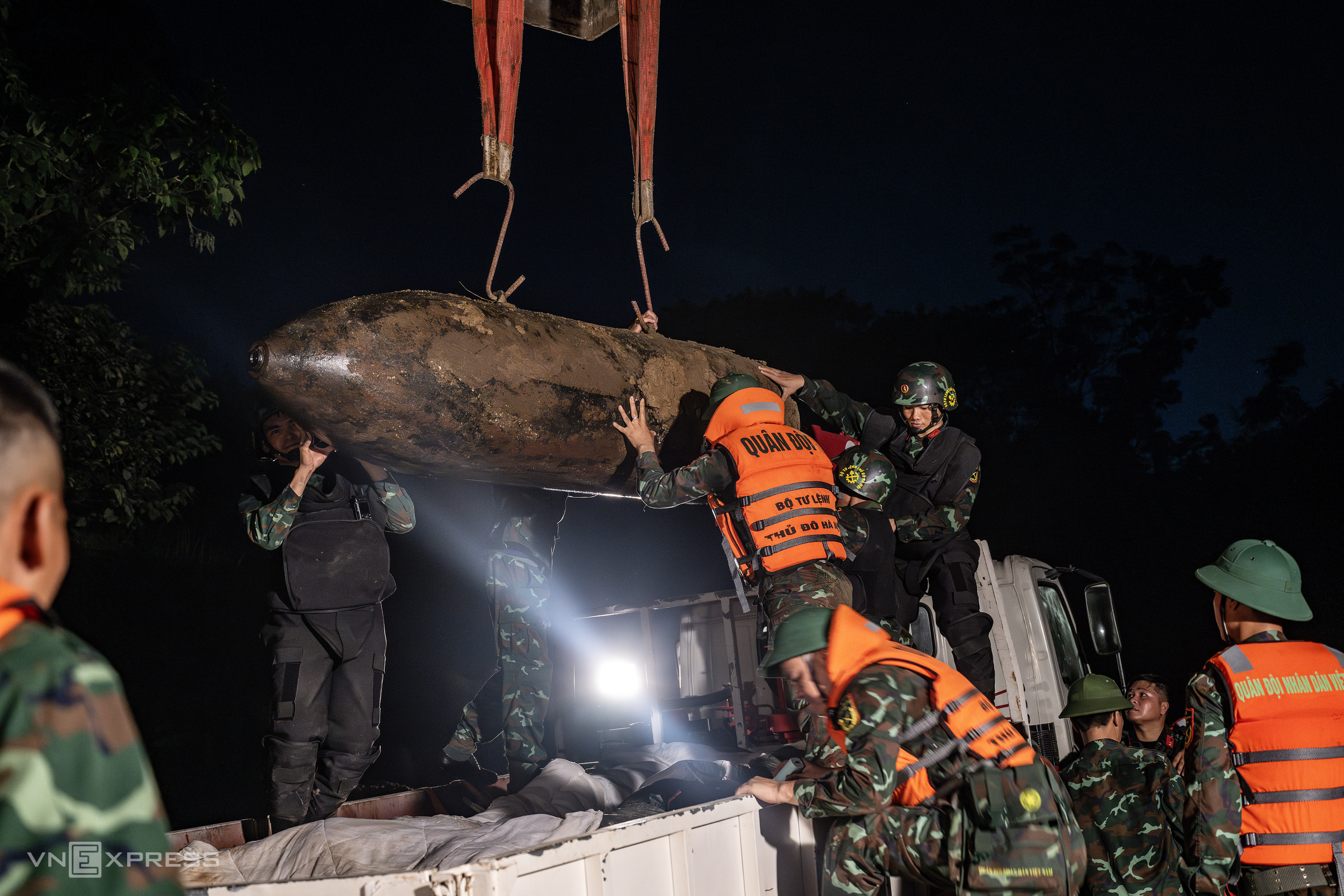 |
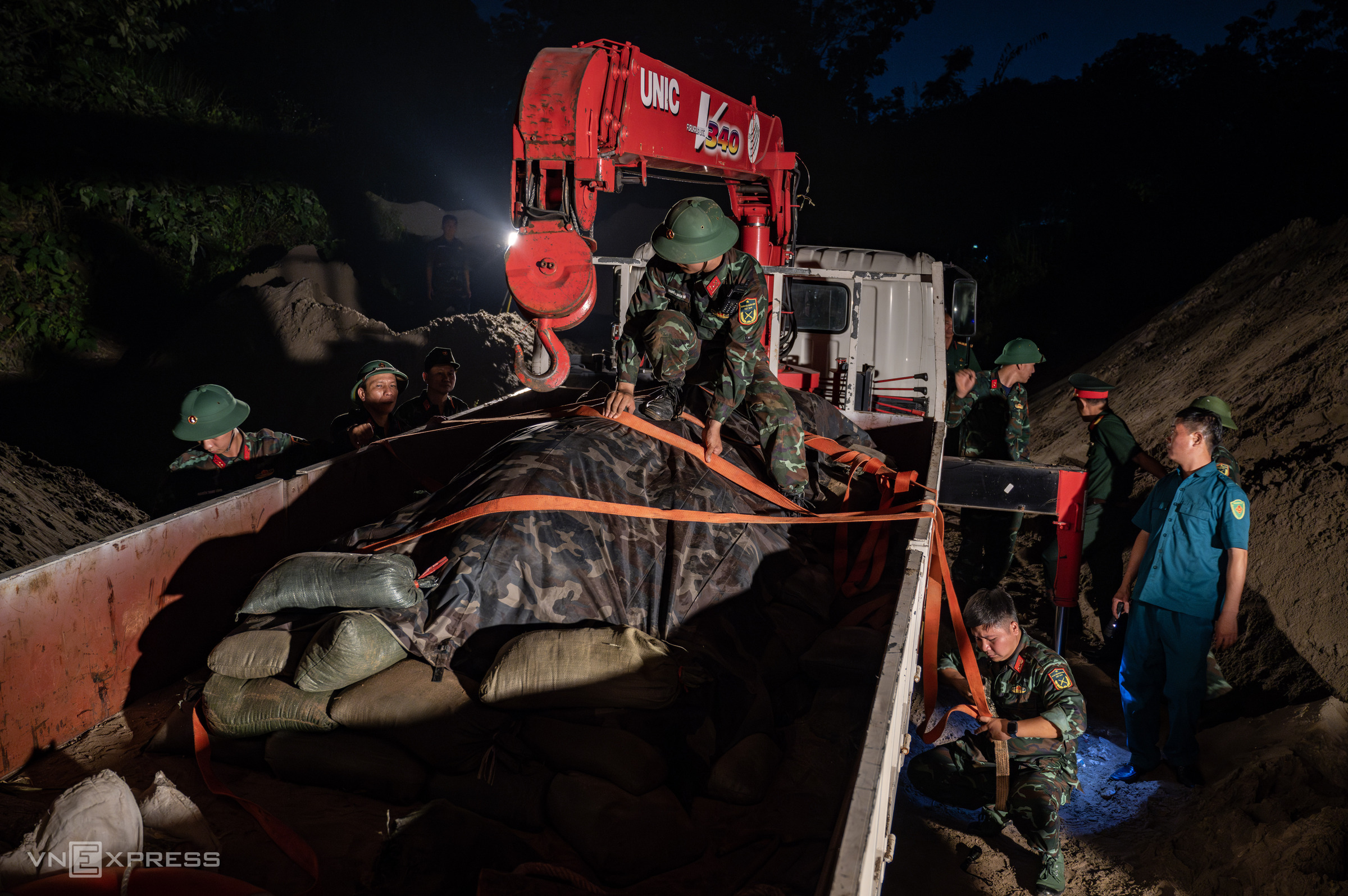 |
Soldiers and militia members used wood and sandbags to secure the bombs during transport.
An advance team from the Hanoi Capital Command coordinated with personnel at the TB1 firing range to prepare the disposal area, including digging pits and setting up detonation equipment. The bombs arrived at TB1 at 4 am on 19/9 and were safely detonated by 6 am, without impacting the range's operations.
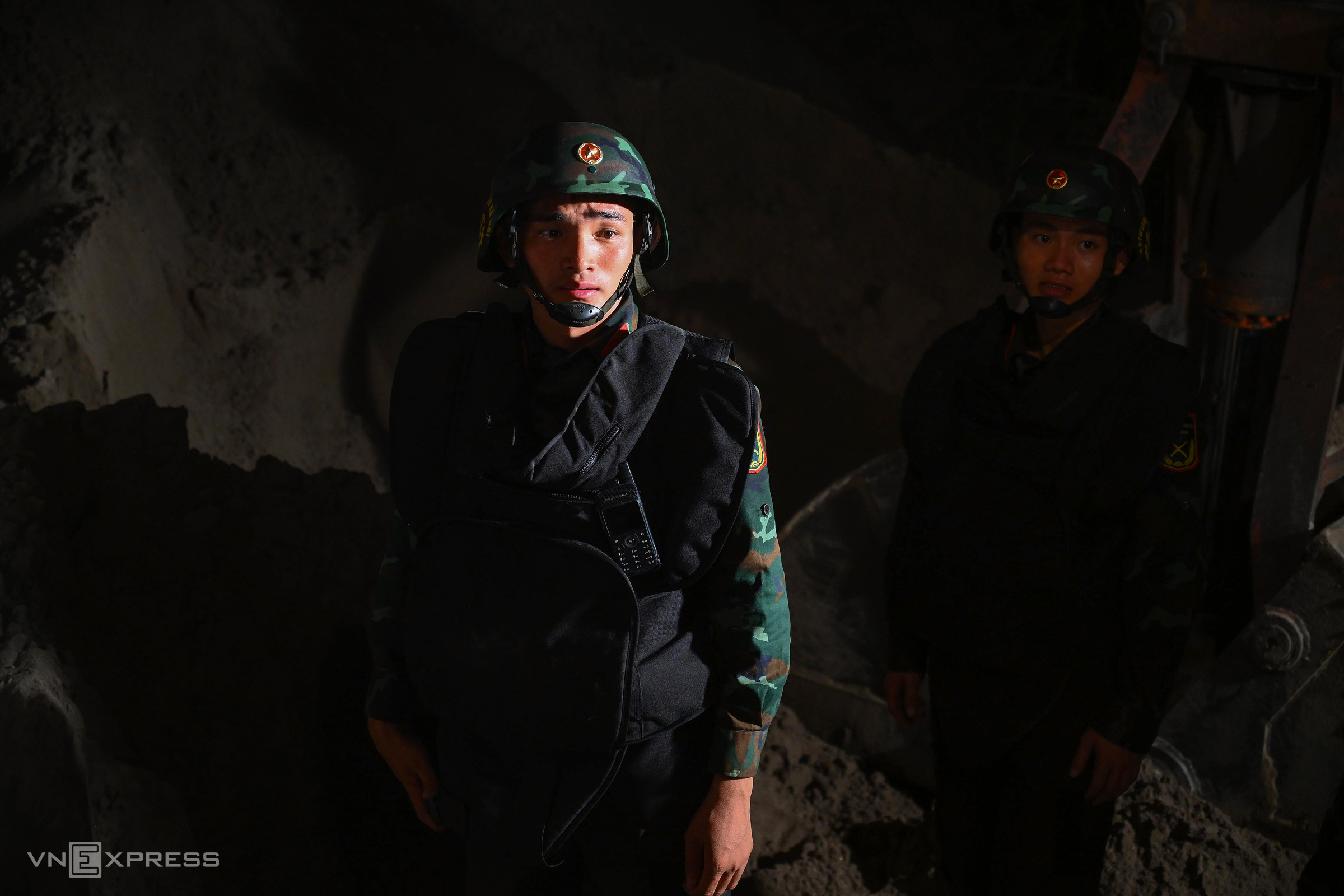 |
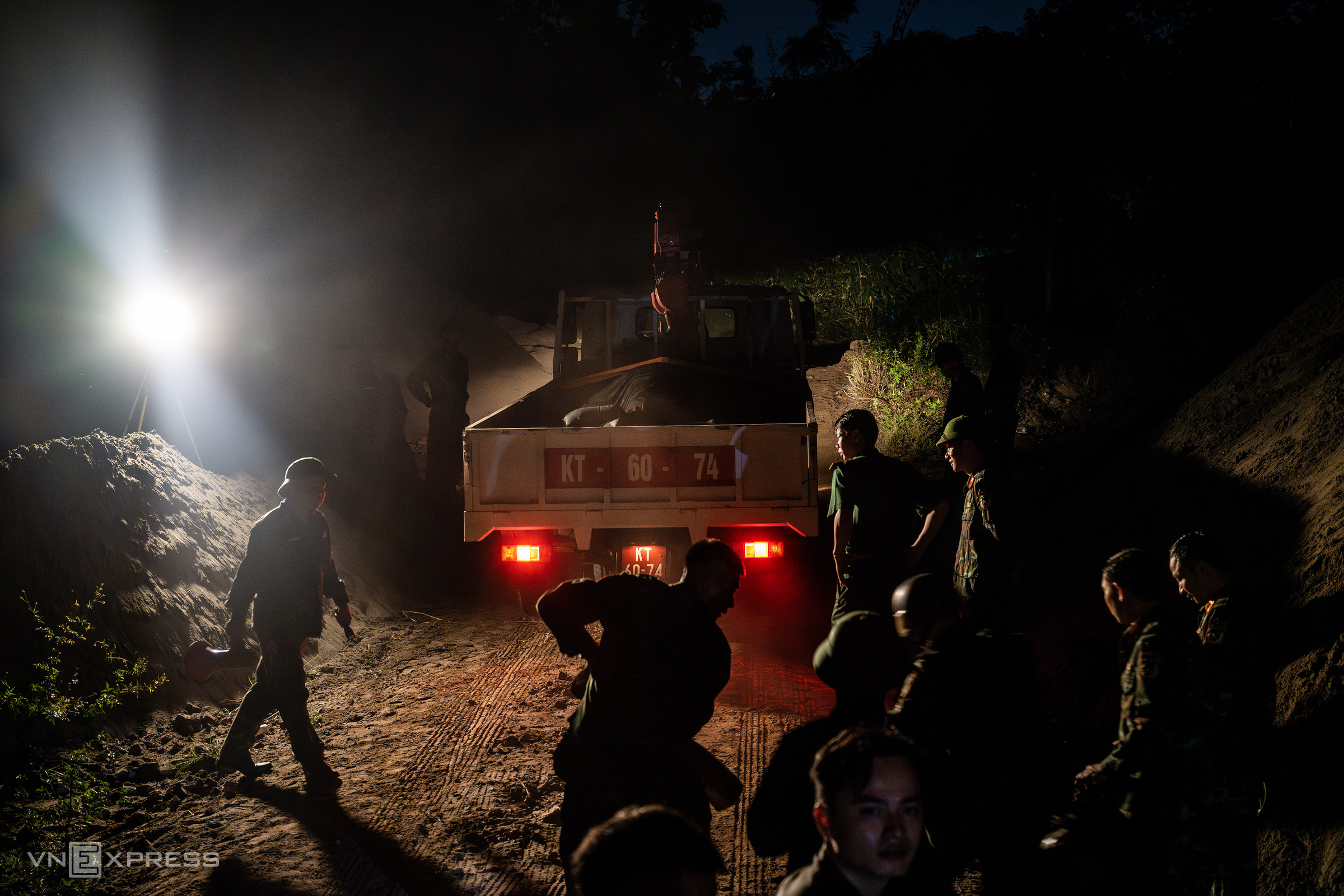 |
The convoy, consisting of a command vehicle, a troop transport, two bomb carriers, and a support vehicle, left the city after 9 pm. The vehicles maintained a 100-meter distance and a maximum speed of 40 km/h on the 200-km journey to TB1.
These recovery and transport operations are always conducted at night to minimize traffic disruption and ensure public safety.
Giang Huy - Hoang Phuong












